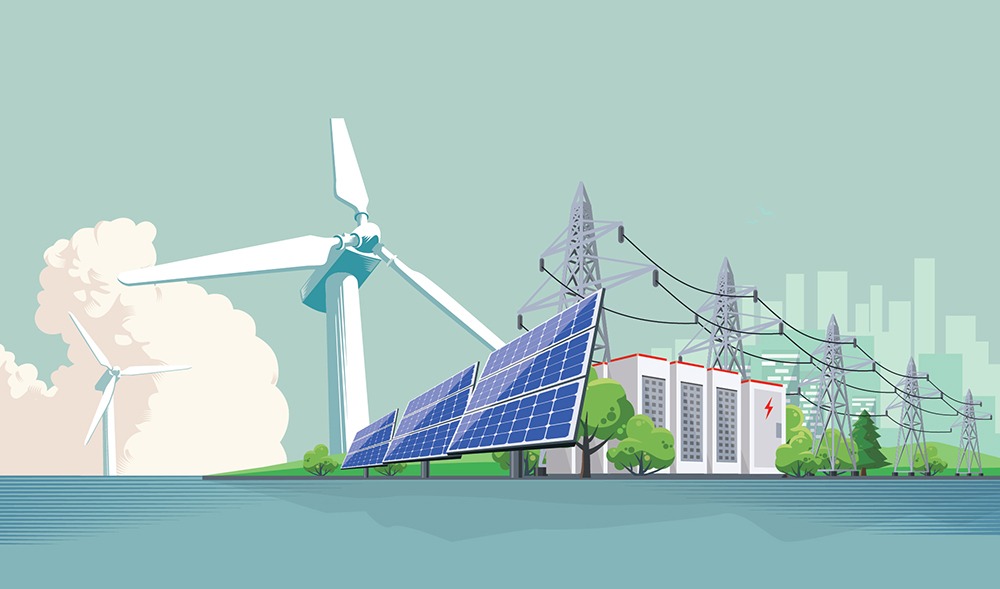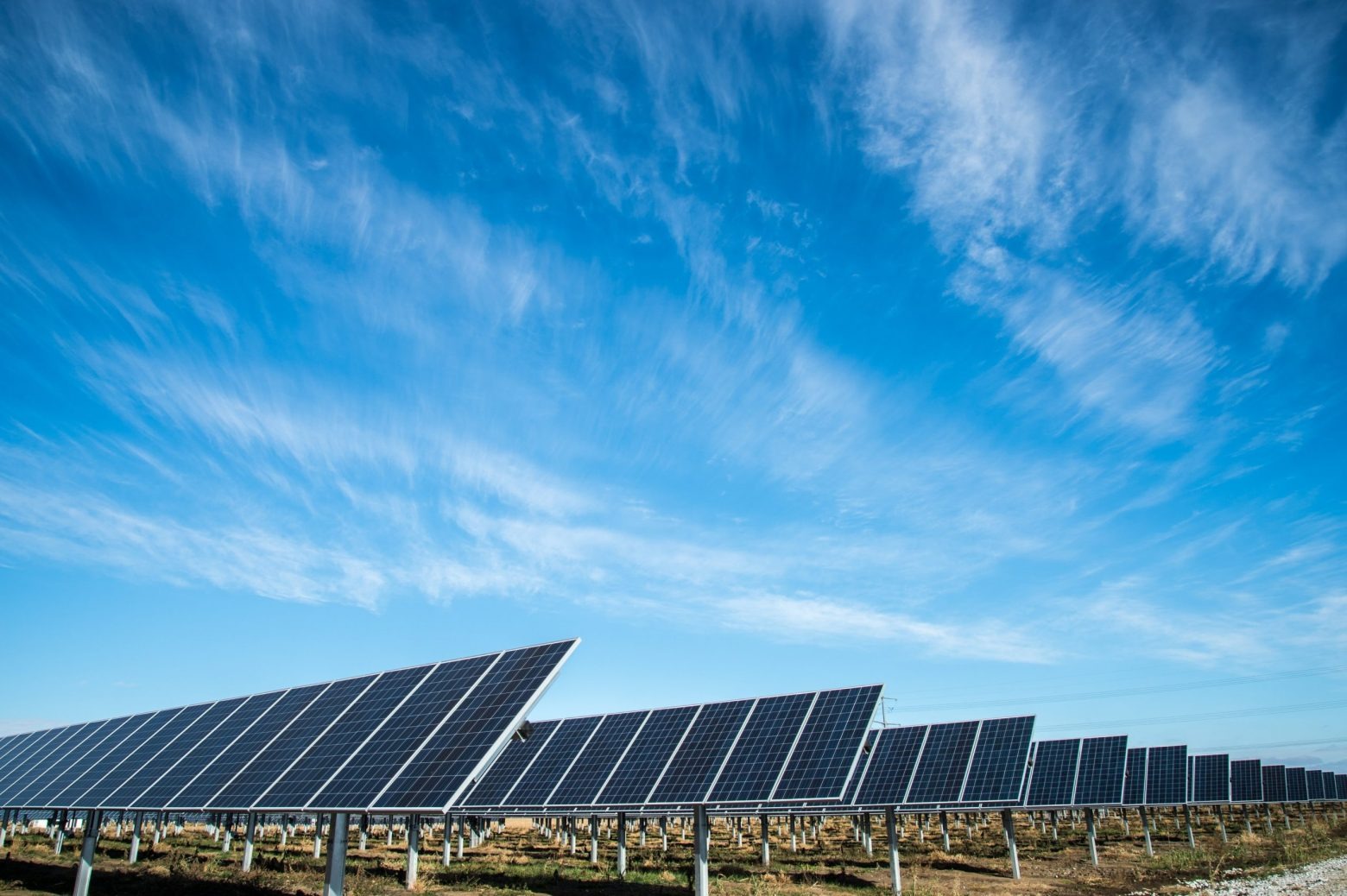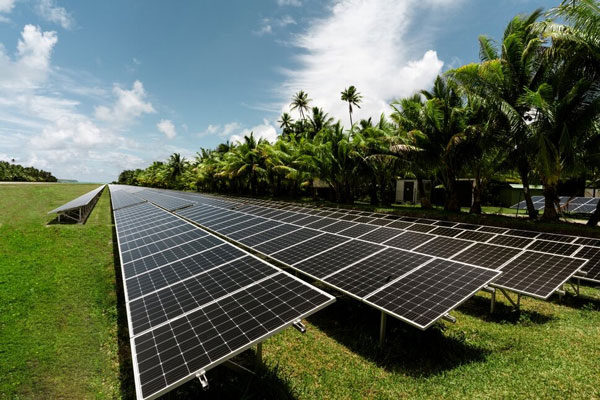Strengthening Infrastructure Against Future Disasters
Use of solar energy helps to rebuild and reinforce the infrastructure after the disaster due to its affordable and sustainable proposal. Ensuring a steady source of power, solar installations make it possible to help communities recover faster from the calamities and become more prepared for the future.
Resilient Solar Grids
Solar microgrids make a significant change in the high risk and high impact disaster areas. These systems can function separately from the main lines to the energy sources, so the microgrids continue to supply households even when the central system breaks down. After Hurricane Maria in 2017, Puerto Rico invested significantly in the solar microgrid infrastructure. These installations made the source of power supply more resilient and flexible to the surrounding circumstances. They made it possible to continue the functioning of essential services like hospitals and emergency response points when the main grid was down.
Cost-effectiveness
Solar infrastructure is cheaper than standard power sources, so contributing to the recovery after the disaster. Besides the reduction in costs perspective as compared to building standard infrastructure after the disaster, the added-cost of solar panels is decreasing. In 2020, according to the International Renewable Energy Agency report, the cost of solar energy installations has been reduced by 20%, so decreasing the cost of using solar energy in the disaster recovery processes.
Speed of Deployment
Solar facilities can be deployed very quickly, which is a critical factor for disaster scenarios. Deploying hundreds of portable solar systems and tens of modular units with movable components can be placed in a few hours of time bringing sustainable relief to the disaster-struck area. After the earthquake in Japan in 2011, mobile solar generators were installed to supply the needed energy to the evacuation points and disaster recovery units.
Environmental Benefits
The solar facility is environmentally friendly, so contributing to the reduced use of fossil fuels and the related Carbon emissions. Oceanic and atmospheric conditions are directly related to carbon dioxide and carbon monoxide levels in the atmosphere.

Contributing to Climate Change Mitigation
Solar energy impacts climate change significantly by reducing greenhouse gas emissions. This renewable source substitutes fossil fuels in terms of energy production. This helps to create less carbon dioxide and other emission products. The vast natural carbon storage sources are forests, which are cut down or burned when needed for something valuable in modern times. Modern solar panels can prevent greenhouse gas emissions by entirely replacing these fossil fuels in the short term when they will become more required in clearing the atmosphere of gas emissions.
Reduction in the Carbon Footprint
The use of solar energy can help reduce the carbon footprint of a household by up to 80 %. One family living in a locality in America with residential solar power saves around one ton of C02 per year. The quantity is equivalent to over 50 trees that would need to be planted annually. The transition impacts the localities as the urban areas are greatly affected due to the huge industrial emissions that the government is unable to initiate sustainability. The suburban residents also will stay in their homes, and solar energy would meet all of their basic energy needs.
Scalability and Flexibility
Solar technology is both powerful and flexible such that its technology is capable of factors. There are local installations of varying capacities in different regions in Sub-Saharan Africa, which relies heavily on traditional fuels in meeting the growing energy needs. A growing population of 600 people is served by the East African company with the solar system while enhancing the growth of local businesses by forming a long-term sustainable partnership with the First Solar. The renewable system provides a clean source of solar energy that has replaced the traditional solidest fuels (SSF) or kerosene.
Long-term Economic Impact
Solar energy has both short and long term economic impacts where it helps mitigate climate change by reducing the initial energy costs. A country that depends on solar technology and power has reduced the vulnerabilities and bases on the fossil fuel prices in the future. The costs of solar power have dropped by over 89% since 2010. It is the cheapest energy generated in the world currently.
Enhancing Energy Security
One of the most important modern reasons that facilitate energy security is solar energy. This kind of energy diversifies both the sources of power and the fuels that might be imported from other countries. When it comes to different types of emergencies, this diversification becomes even more critical; solar energy proves to have reliable and decentralized properties.
Decentralized Energy Generation
During any catastrophe, central production of energy becomes untrustworthy. Solar energy systems installed in neighborhoods or cities ensure that people and their communities will avoid being left without electricity. California fires proved the fact that homes with solar panels and battery storage had significantly fewer expensive or unexpected outages. Solar power stations distributed through the urban area are safe and people-oriented sources of energy.
Less Reliance on Fossil Fuels
Solar power minimizes the number of companies and customers using fossil fuels. As a result, it leads to stabilized energy supplies within a country and abroad. People in Japan have realized the importance of such a transition to solar after the Fukushima disaster. The country could not rely on nuclear energy and started to use more gas imports, which was a dependable source of energy as well. Because the nation was not independent, the use of solar energy was enhanced, which made the quality and safety of the ‘made in Japan’ product beyond the highest standards.
Fast Response During Emergencies
The immediate provision of aid presupposes that the emergency should not be the end to the existing achievements. Portable units and first-aid kits are required to perform their functions — to support the work of rescue groups and supply everyone with the most essential articles in the first place. After Typhoon Lituya or Yolanda in the Philippines, there was no light in the streets. Nevertheless, there was always electric power at the Lumbia airport, which is run on solar panels. This enabled the operation of radars, searchlights, and recharge of the batteries of electronic devices used by flyers. It made it possible to take the sick and wounded to hospitals by helicopter or plane at any time of the day.
Reducing Urban Heat Islands
Solar panels are capable of generating clean energy and mitigating the urban heat island effect caused by traditional roofing materials. This feature is critical to recover from urban disasters, creating cooler cities, and mitigating heat-related stress during power outages.
Reflective Properties of Solar Panels
Solar panels directly reflect sunlight that, otherwise, would be easily absorbed. Several research cases reveal that the rooftop temperature of a building with solar installation is reduced by “up to 5°F compared to a roof without one”. Given that “urban heat island effect is caused by the concentration of buildings in close proximity”, solar panels cool the entire structure ultimately reducing the phenomenon of the urban heat island used.
Improvement of Green Roof Integration
One of the most effective ways of integrating solar installations with traditional green roofs is that the cooling effect occurs on two levels. The cooling effect caused by vegetation is coupled with the decrease of the roof temperature that intensively prevents the absorption of sunlight. The examples of Chicago and Toronto demonstrate that the reductions of ambient temperatures might reach 2°F. The decrease of temperatures caused by vegetation is usually between 60 and 80°F.
Lowering Air Conditioning Demand
One of the biggest advantages of solar panels is the fact that the air conditioner is no longer needed to cool down the building. The air conditioner is known to be responsible for the most peak electricity consumption during heatwaves. Since solar panels cool cities down, the entire load on the city electricity system decreases. There is data that in New York City, there was a level of peak electricity consumption reduction of 30% in buildings with solar installations. The study took place during the hottest days of the year. Solar panels should be mandated to be a part of urban planning solutions.

Promoting Green Technology Adoption
The use of solar energy at the disaster recovery stage allows both to solve the issue of the victims’ immediate energy needs and to initiate a large-scale process of renewable energy technology implementation as such. Such an approach becomes the basis for creating robust and sustainable communities, which makes the shift from nonrenewable energy sources to their renewable counterparts an indispensable part of modern governmental policies.
Government Incentives and Policies
Government incentives remain one of the most effective drivers of the population’s solar energy adoption post-disaster. In the case of Hurricane Sandy, one of the most severe disasters in US history, the New York government introduced a comprehensive tax policy consisting of a 30% federal tax credit and 25% state tax credit available to homeowners and business owners building the lost roofs . The possibility of creating solar panels economically accelerated the disaster recovery process, increasing the city’s and the state’s energy resilience to possible future disasters.
Community-Based Initiatives
Community-based initiatives present an illustrative example of how small regional units can generate the shift towards green technologies. After the natural disaster, people who suffered from this follow from their own pockets and joined solar energy installation projects. A prominent example of community-based solar energy projects is that of the solar gardens created in Colorado which not only provide the community’s energy independence but also allow all its members to use renewable energy regardless of their house’s physical ability to mount solar panels.
Integration with the Disaster Recovery Plans
Joining the solar energy projects and recover after the disaster imply substantial agreements on the incorporation of the solar energy into the region’s disaster recovery plans. After the 2010 earthquake in Haiti, the international aid of solar-powered streetlights as well as solar panels for the country’s hospitals. The latter significantly increased the recovery speed of the disaster-hit region and its energy’s robustness .
Educational and Awareness Campaigns
Working with the population directly includes the implementation of educational and awareness campaigns. The efficient device of such a campaign is the articulation of the benefits of the solar technology in the context where all the disaster-prone areas are. Post the 2011 Thailand flood “public education programs by the government to enhance the awareness of renewable energy in public have increased the support for renewable energy and consequently encouraged the investment in the solar industry”.





